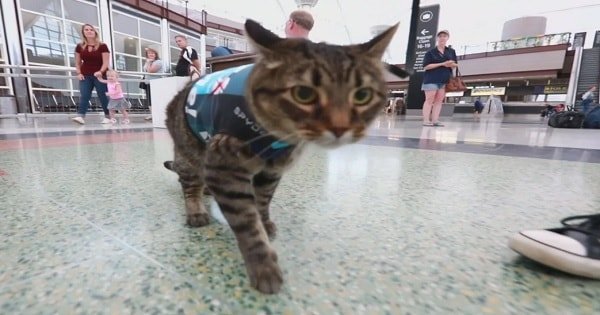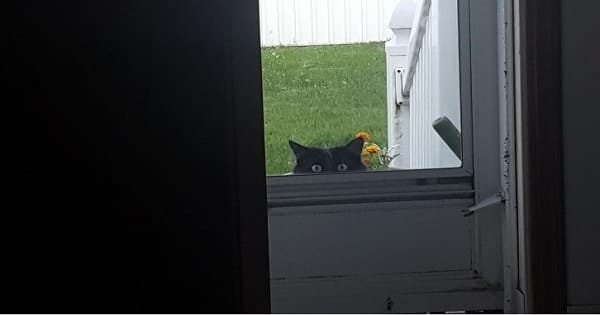NEVADA – Liza was just about 10 days old when she was rescued from a storm drain.
The gray kitten’s eyes were extremely infected; by the time she made it to a veterinarian, her stubby claws bloody and raw from hanging onto drain’s metal gratings, she was declared blind. Rescued by a dog and a family who were just out for a walk, she never got to see the world.
After her health was more stabilized, the kitten was sent to Nevada Society for the Prevention of Cruelty to Animals, where she met her foster mom, Sonja Wiker.
The kitten tumbled off the sofa as Wiker was watching Liza Minnelli star in “Cabaret.” She hit the floor but gained a name.
The fall didn’t stop Liza from wandering either; neither does her blindness.
“Nobody told her she was blind,” the Las Vegas resident explained as she cradled Liza after bottle-feeding her. “She’s not afraid.”
Liza is one of the estimated 2,200 kittens which the Nevada Society for the Prevention of Cruelty to Animals, a local no-kill animal shelter, is expected to save by summer’s end.
Executive director Doug Duke explained that March through the end of September brings an influx of motherless kittens, the result of cat breeding season, warm weather and holidays.
“Truly, Fourth of July, there’s no other time like it. It’s just like a perfect storm between the fireworks and the pregnant animals on the streets,” he stated.
“When it was 250 (motherless kittens) through the spring and summer, we thought, ‘Well, it can’t get any worse than this.’”
However, it did. The week following the Fourth of July, Duke said the shelter was slammed with 168 motherless kittens. As of June 8, the shelter placed more than 300 kittens in foster care.
Shrieking bottle rockets and exploding cherry bombs in backyards can scare mother cats or their newborn litters, causing them to flee and separate, he explained.
Suddenly abandoned, the kittens end up just wandering the streets, said Janean Sechrist, a volunteer. Summer storms don’t help much either, Sechrist noted; kittens often will float away in storm drains, as Liza did.
“We get all kinds of stories,” she went on to say, “but they survive.”
So far just this year, the shelter has taken in approximately 1,800 kittens from other shelters, organizations and the streets. Back in 2012, the shelter saw about 250 rescues. Because of its no-kill status, the Nevada SPCA,will help other organizations with overflow.
By taking in kittens at a rate of at least one dozen a day, the shelter knows it will see a 100 percent increase over 2015’s 1,100 kitten rescues, Duke stated. The cost to take care of each kitten is hard to pinpoint; it can vary depending on medical needs.
Duke also explained that the shelter is now building a strong network of foster families, which are needed for kittens to survive their first 12 weeks of life. That’s just when they need a home to get used to being around people.
Most of all, having foster families lets the shelter free some very much needed space for other incoming animals.
“In spite of the size of the building, there’s no way to take in hundreds of kittens all under one roof,” Duke stated. “But by people taking them home, more and more can be rescued.”
Duke said most of his hundreds of volunteers are active foster parents. Anyone with “a tender touch and a gentle voice” may become one, he said.
Animals in need always go home with various shelter volunteers, Duke said.
“Sometimes they know they’re taking babies who are very unlikely to survive,” he stated. “There’s a chance, though, so they take them.”
After just 12 weeks, the kittens are ready for spaying or neutering and adoption. About 15 percent of the time, kittens who are fostered will be adopted out by their foster family. Other times, shelter visitors may take them.
“They get adopted right there in the lobby and go home,” Duke stated.
For Wiker, fostering Liza means allowing the kitten crawl around and explore her surroundings, even if she stumbles a few times.
And even though little Liza can’t see what her future holds, she has the comfort of knowing that the Nevada SPCA will do their best to guide her to a forever home. And hopefully, that will be enough.














